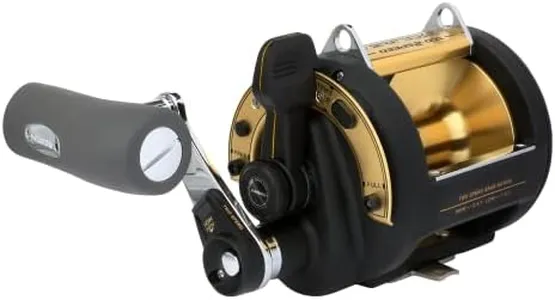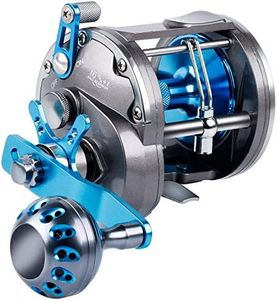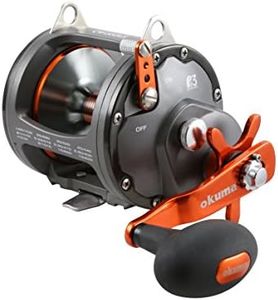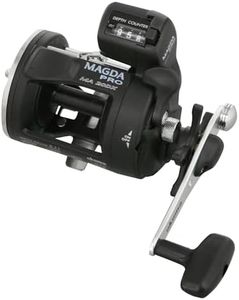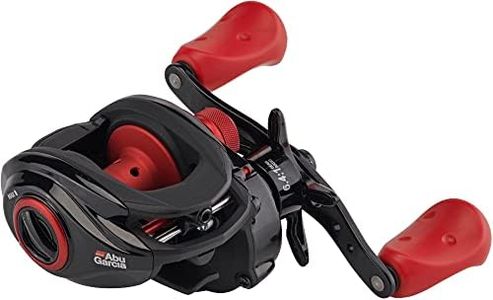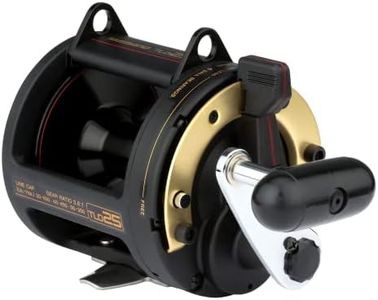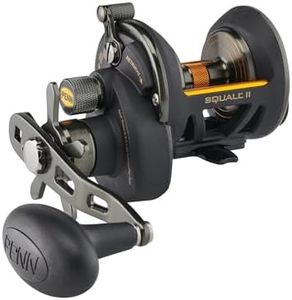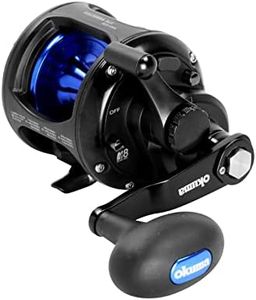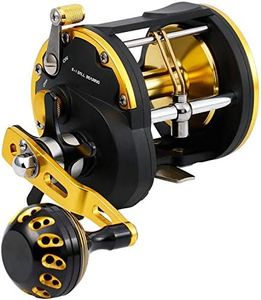We Use CookiesWe use cookies to enhance the security, performance,
functionality and for analytical and promotional activities. By continuing to browse this site you
are agreeing to our privacy policy
10 Best Trolling Reels
From leading brands and best sellers available on the web.Buying Guide for the Best Trolling Reels
Choosing the right trolling reel is all about finding the perfect balance between your style of fishing, target species, and the environment where you fish. A trolling reel is a special kind of fishing reel designed for dragging bait or lures behind a moving boat. Understanding the basic features and what they mean for your experience will help you select a reel that’s easy to use, durable, and matched to your fishing goals. By focusing on the key specifications, you’ll be able to cut through the marketing and find a reel that truly fits your needs.Line CapacityLine capacity refers to how much fishing line the reel can hold, usually listed in yards of a given pound-test line. This is important because trolling often involves letting out long lengths of line behind your boat, and you may need more line than with other types of fishing. Smaller capacity reels are good for light tackle and smaller fish or shorter trolling runs on lakes, while larger capacity reels are necessary for deep-sea or big game fishing, where fish can make long, powerful runs and you may need heavier line. Choose your reel’s capacity based on the size and species of fish you want to catch and the body of water you’ll be fishing.
Drag SystemThe drag system controls how much resistance a fish feels when it pulls on your line. A smooth, strong drag keeps fish from breaking off and allows you to fight them without snapping your line. Light-duty reels have basic drag systems suitable for small to medium fish, while heavy-duty or multi-disc drag systems are designed for larger, stronger fish. Think about the strength and size of your target species; if you’ll be battling big, fast fish, look for a robust drag that stays smooth under pressure.
Gear RatioGear ratio tells you how many times the spool rotates with each turn of the reel handle. A higher gear ratio retrieves line faster, which is helpful when you need to quickly bring in your gear or fish. Lower gear ratios provide more cranking power, making it easier to reel in heavy or strong fish. For smaller or faster-moving species, a higher ratio might be better. If you’re fishing deep water or targeting larger, fighting fish, a lower gear ratio will give you the strength you need.
Construction MaterialTrolling reels can be made from a variety of materials, most commonly graphite, aluminum, or a combination. Aluminum reels are generally stronger and more resistant to flexing under pressure, ideal for saltwater and big game fishing, but they’re a bit heavier. Graphite reels are lighter and more corrosion-resistant, making them suitable for lighter applications or freshwater. If you plan to fish in saltwater or for large species, choose sturdy materials like aluminum. For lighter fishing, graphite is a good, easy-handling option.
Level Wind MechanismSome trolling reels have a level wind feature, which guides the line back and forth evenly across the spool as you retrieve. This prevents uneven line buildup and tangling. Level wind is great for beginners and convenient for most trolling, but some advanced or offshore anglers prefer reels without it for extra strength and simplicity. If ease of use is a top priority, or you’re new to trolling, a level wind system makes your day much smoother.
Line CounterA line counter is a helpful feature that shows how much line you’ve let out. This is especially useful for precision trolling, helping you put your bait at the exact depth or distance from the boat where fish are biting. If you want consistent results or plan to troll at specific depths (for example, over deep water or trolling for walleye or salmon), a line counter is a valuable tool. If you just do casual trolling in shallower water, it may be less important.
